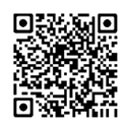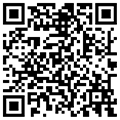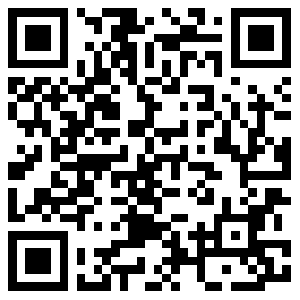在非肥胖2型糖尿病患者及继发于慢性胰腺炎的糖尿病患者给予...
2018年07月29日 5117人阅读 返回文章列表
No Hypoglycemia After Subcutaneous Administration of Glucagon-Like Peptide-1 in Lean Type 2 Diabetic Patients and in Patients With Diabetes Secondary to Chronic Pancreatitis
Abstract 2003年
在非肥胖2型糖尿病患者及继发于慢性胰腺炎的糖尿病患者给予皮下注射胰高血糖素样肽-1无低血糖发生海南医学院第一附属医院内分泌科王新军
OBJECTIVE—Glucagon-like peptide 1 (GLP-1) is a proglucagon derivative secreted primarily from the L-cells of the small intestinal mucosa in response to the ingestion of meals. GLP-1 stimulates insulin secretion and inhibits glucagon secretion. It has previously been shown that intravenous or subcutaneous administration of GLP-1 concomitant with intravenous glucose results in hypoglycemia in healthy subjects. Because GLP-1 is also effective in type 2 diabetic patients and is currently being evaluated as a therapeutic agent, it is important to investigate whether GLP-1 may cause hypoglycemia in such patients. We have previously shown that GLP-1 does not cause hypoglycemia in obese type 2 diabetic patients with insulin resistance amounting to 5.4 ± 1.1 according to homeostasis model assessment (HOMA). In this study, we investigated diabetic patients with normal or close to normal insulin sensitivity.
目的:胰高血糖素样肽-1(GLP - 1)是一种在膳食摄入刺激下,由小肠粘膜L细胞分泌的胰高血糖素原衍生物。 GLP-1可刺激胰岛素分泌并抑制胰高血糖素的分泌。先前的研究已表明,在健康受试者静脉或皮下注射GLP – 1同时静脉给予葡萄糖可伴随发生低血糖。由于GLP - 1在2型糖尿病患者也有效,目前正在评估作为一种治疗药物,因此探讨GLP-1是否会导致此类患者发生低血糖是非常重要的。我们的研究曾表明,GLP - 1不会导致伴胰岛素抵抗的肥胖型2型糖尿病患者发生低血糖,根据稳态模型评估法(HOMA),这些患者的胰岛素抵抗指数为5.4 ± 1.1。本研究中,我们研究的糖尿病患者胰岛素敏感性是正常或接近正常的。
RESEARCH DESIGN AND METHODS—Eight lean type 2 diabetic patients (group 1) aged 60 years (range 50–72) with BMI 23.1 kg/m2 (20.3–25.5) and HbA1c 8.0% (6.9–11.4) and eight patients with type 2 diabetes secondary to chronic pancreatitis (group 2) aged 52 years (41–62) with BMI 21.9 kg/m2 (17.6–27.3) and HbA1c 7.8% (6.2–12.4) were given a subcutaneous injection of 1.5 nmol GLP-1/kg body wt. Then, 15 min later, at the time of peak GLP-1 concentration, plasma glucose (PG) was raised to 15 mmol/l with an intravenous glucose bolus. HOMA (mean ± SEM) showed insulin resistance amounting to 1.9 ± 0.3 and 1.7 ± 0.5 in the two groups, respectively.
研究设计及方法:8例非肥胖的2型糖尿病患者(第1组),年龄60岁(50-72岁),体重指数23.1 kg/m2(20.3-25.5),糖化血红蛋白8.0%(6.9-11.4)和8个继发于慢性胰腺炎的2型患者糖尿病患者(第2组),年龄52岁(41-62岁),体重指数21.9 kg/m2(17.6-27.3),HbA1c 7.8%(6.2-12.4)分别给予皮下注射1.5 nmol /公斤体重的GLP-1。15分钟后,即在GLP - 1浓度达高峰时,静脉注射葡萄糖使血浆葡萄糖(PG)升高到15 mmol/l。 HOMA(平均值± SEM)胰岛素抵抗指数在两组分别为1.9 ± 0.3和1.7 ± 0.5。
RESULTS—In both groups, PG decreased rapidly and stabilized at 7.5 mmol/l (range 3.9–10.1) and 7.2 mmol/l (3.1–10.9) in groups 1 and 2, respectively, after 90 min. Neither symptoms of hypoglycemia nor biochemical hypoglycemia were observed in any patient.
CONCLUSIONS—We conclude that a GLP-1-based therapy would not be expected to be associated with an increased risk of hypoglycemia in insulin-sensitive type 2 diabetic patients.
结果:两组PG均可迅速下降,90分钟后在第1组和第2组分别稳定在7.5 mmol/l(3.9-10.1)和7.2 mmol/l(3.1-10.9)。俄米有患者发生低血糖症状,也未检测到血糖降低。结论:我们推断,在胰岛素敏感的2型糖尿病患者, GLP - 1为基础的治疗不会发生低血糖的风险增加。

 浙公网安备
33010902000463号
浙公网安备
33010902000463号



